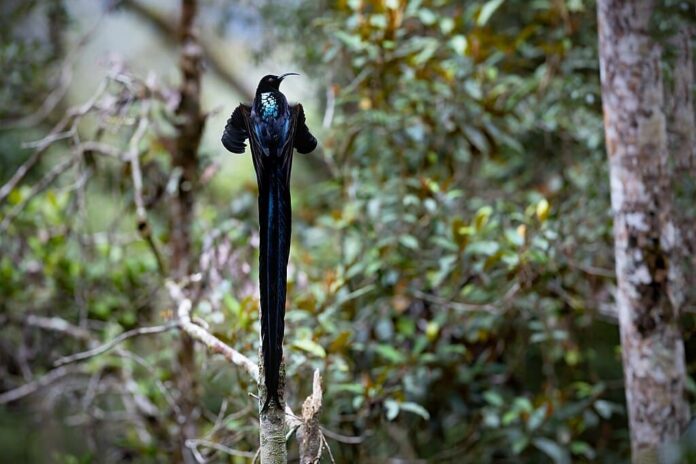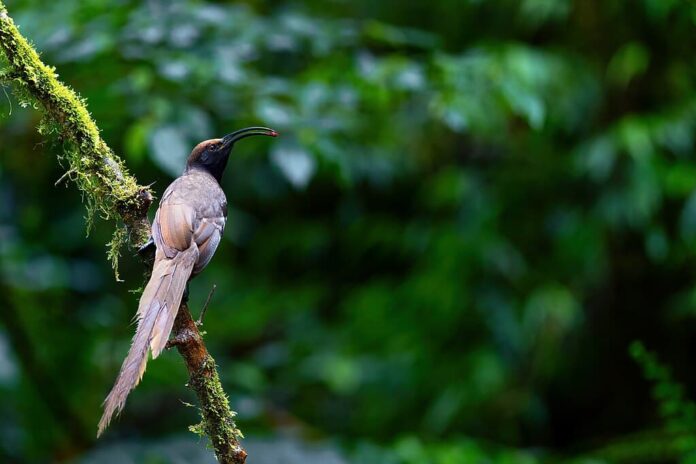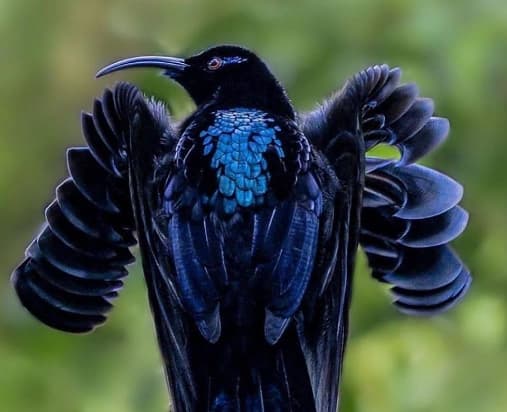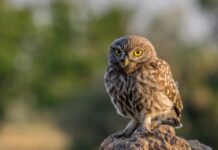Black sicklebill, what a name for a bird of paradise, right? All birds of paradise out there are renowned for the males’ courtship dance, and it is the same with this one. Beauty is one thing, the effort the males put into getting the female’s approval is another thing. If you want to know the important details about the black sicklebill, you are at the right place. Everything you need to know is all there below.
1Appearance

As you probably already know, the striking appearance of birds of paradise only exists in males. A male black sicklebill has a black head with a long and silver bill that is slightly downcurved. It has a bright yellow mouth and scarlet-red eyes. The front of the face is covered by iridescent blue-greenish scaly feathers, while the rest of the head and neck is jet black. As for the back, its scale-like feathers are metallic blue or greenish blue in some lights.
The most eye-catching feature of a black sicklebill is its long tail which is around 50 centimeters. Normally, a male’s overall length is 110 centimeters, making it the second-longest bird of paradise species. The females, though, are rather plain. At the same time, they are also smaller in size, measuring only around 48 centimeters. They have olive-light brown above and creamy on the belly, with an orange-brown crown. Female black sicklebills still have a long tail, but not as long as the males.
2Behavior
The courtship begins in the mating season, which is from September to October and February to April. A male black sicklebill chooses a pole-like upstanding branch to practice for days before he is ready. Before the show begins, he makes loud calls to attract a female. When a female lands on his pole, he starts dancing to impress her. Once she shows that she likes his horizontal courtship display, they copulate. Because these birds are polygamous, the male will repeat his display with other females after. A male black sicklebill mates with several females in each breeding season, and plays no role in parental duties. Female black sicklebills build the nest and care for the eggs and chicks.
3Feeding & Habitats

Endemic to New Guinea, the black sicklebill occurs throughout most of central New Guinea and the Vogelkop Region. Living in montane forests and rainforests, these omnivorous birds feed on arthropods, fruits, insects, vertebrates, and other animal prey in the tree canopy. These elegant birds feed solitarily, but they do join mixed foraging flocks sometimes. The status of the black sicklebill is listed as Vulnerable, though declining, with 2,000 to 10,000 individuals in the wild. They are facing some threats, including ongoing habitat loss, and hunting for their feathers and tails in some areas.
Related Post: Beautiful Birds Of Paradise




